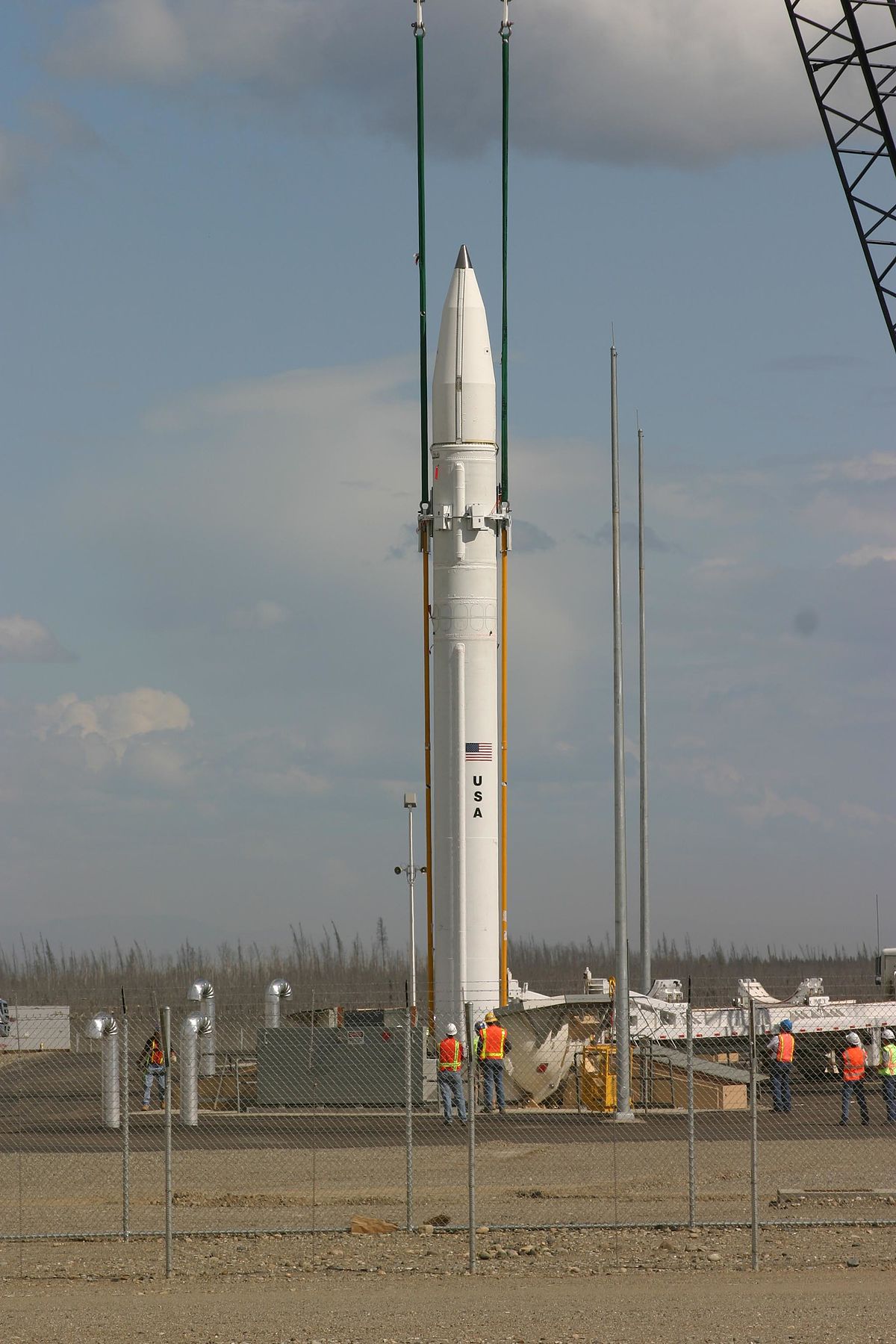Why would ground to orbit weapons have such strict range limits? With any sort of kinetic or missile weapon, the orbit to ground range is yes. Missiles could also have reentry vehicles capable of controlled atmospheric flight.
Poor comparison...
"Getting there" is only one of the problem, a missile interceptor needs to get there fast and hit the target.
Here's an actual anti-missile and it's quite a bit bigger:

Ground Based Interceptor – Wikipedia, wolna encyklopedia
pl.wikipedia.org
Well if the defending side has fortified airbases, that's one thing the attacker would be using their megaton orbit to ground weapons against.
Well, because that is the line of sight. As you say, a kinetic or missile can fire non-line of sight, but that does also have issues of speed and range too.
Eh, the ground based interceptor is an example of an anti orbital missile, but it certainly doesn't show a minimum viable size of one. For example, SM-3 and THAAD are also anti orbital missiles, and are much smaller at 1.5 and 0.9 tons each. And all of those are solid fuel as well, likely for the zero warning concerns, and solid fuel rockets are dramatically worse than liquid fuel rockets. Which are perfectly viable in non-zero warning situations, where you have 10-20 minutes to refuel or know your likely to shoot the missile that day.
Because you have such large mass ratios, small improvements in the interceptor also give large returns: the GBI seems to have a 21 ton weight with a 70 kg interceptor, for a mass ratio of 300-1. A more advanced interceptor of 20 kg, in line with a current shoulder fired missiles, get it down to a six ton missile. Mass ratio in line for a Falcon 9 is a 130-1 for payloads to Mars: That suggests a high performance rocket with Falcon 9 tech and a 20 kg payload may be on the order of 2.6 tons, 500 kg with LEO assumptions. And every kg shaved of the interceptor cuts down overall missile mass by 25-300 kg.
I'm doubtful of anti orbit manpads as generally practical outside extremely edge situations, but couple of hundred kg to a couple of tons seems quite doable, especially since they do exist in the form of SM-3s and THAADs, who's rapid prompt intercept needs may be forcing the use of sub optimal tech such as solid propellants.
I know the megaton weaponry is a bit of a meme, but I think in comparing orbital weaponry to non-orbital its useful to measure that out.
Taken most literally, a megaton weapon like a laser or such would be roughly 4 petajoules of energy. Many current electronic systems have power to weights in the 1 MW/ton range. At that power to weight, a 4 petajoule system weighs 4 billion tons. This seems impractical. High performance systems and modern weapons seem to be in the 10 MW/ton range. Now weight is down to 400 million tons. Still a bit troublesome. Very high performance like shuttle turbopumps can get 150 MW/ton, so were talking about 26 million tons. This is at least something that might plausibly fit in a Star Destroyer. Super advanced 1 GW/ton gets the weight down to merely 4 million tons. As a point of comparison in WWII the allies dropped roughly 2.7 million tons of bombs overall.
If you instead transported 4 million tons of material, you could move 20,000 Armored vehicles, 1 million personnel, 100,000 logistical vehicles, and have a million tons of consumables. Dropping the equivalent of the US army may be more effective at achieving military objectives, on a faster timetable, for less cost, and at less collateral damage, than a single doom laser.
And such high power is not necessarily a given for space either: 1 cm/s^2 acceleration at an impulse of 50 km/s, enough for roughly a km/s delta v per day, only requires a vehicle power to weight of 250 kw/ton. At 1 MW/ton engines are only 25% of the ship's mass, and at 10 MW/ton only 2.5%. 100 km/s exhaust velocity and 10 cm/s^2 would be 5 MW/ton. Advanced would require roughly 50% of ship mass be engine/power plant, very advanced a mere 5%.
Now admittedly, a 200,000 ton ship with that 5 MW/ton performance is a ship with a 1 TW engine. High performance engines suggest roughly 10,000 ton engine mass, probably half its weight in fuel, maybe 10,000 tons of tankage. 80,000 tons of other, which maybe 50-60k can be mission mass?
We then can see a little clearer what trade offs may be: 50,000 tons of lasers, maybe 10 MW/ton power to weight for 500 GW laser power, nothing to sneeze at. Or maybe 500 armored vehicles to the surface? A carrier with 100 high performance fighters? Or a missile boat of 5,000 high performance missiles?
When doing combined arms between direct fire, fighters, missiles, and troop ships, I get the sense the balanced force probably does not have zero ground troops. Depending on what the cost/effectiveness is, I lean to them potentially being reasonably substantial.
Last edited:



